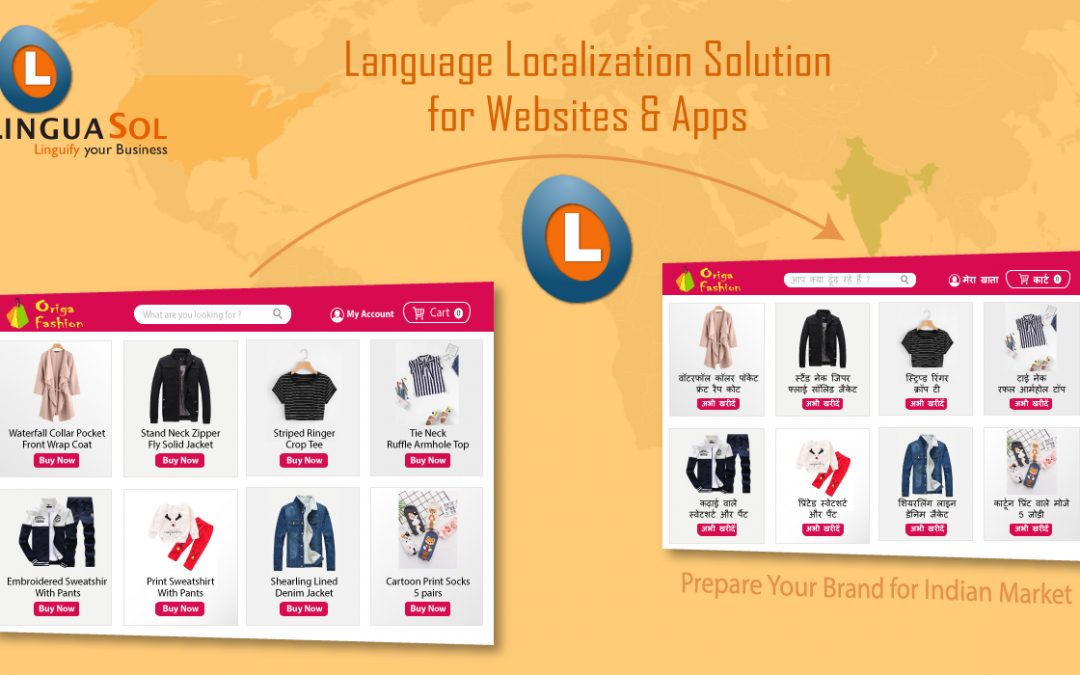Website Language Translations : Way International Brands Should Prepare For Indian Market
Denying website translations is as good as preventing your efforts from translating into success. While your English website works well in the English speaking countries, it might not be connecting with the non-English internet users, and which is why your business might be losing out on a lot of market potential!
Today, website language translations have become as important as your product quality and your urge for customer satisfaction. As known to everyone, every market has its own requirement when it comes to languages and dialects. However, India, in particular, is quite a difficult customer to deal with, given the number of languages, the number of dialects, and further the impact of multiple words with the same meaning, but understood and perceived in a different manner across different regions of the country. So, here’s a blog that talks about website language translations, but what is that is required to prepare for the Indian market.
How much are you losing onto by not Translating your Website?
Although English constitutes to be the principal language for business transactions in the metropolitan cities, the national language and the most widely used language in India still remains Hindi. It is only 20% of the national population that speaks in English. So, roughly you might be losing onto almost 80% of the Indian consumer share if you are side-tracking website translations in India!
However, having said so, one cannot conclude that the rest of the chunk comprehends Hindi. Given the diversification of languages and cultures in India, it becomes imperative for business owners to go beyond Hindi, and think micro to translate the website in multiple regional languages, and if possible, the most widely spoken dialects across the targeted region. Therefore, the ones that understand this, and think micro when it comes to executing translation strategies, stand a better chance of blossoming in the Indian market.
So how do you prepare for the big race in the widespread and somewhat evolving Indian market? Here’s the answer.
4 Steps to Prepare for the Indian Market
-
Localize your Website
This comes in as an obvious and important step in the Indian context. Given the fact that the Indian market is huge and fiercely competitive, it requires perfect translations, keeping the local context in mind, and the impact that each and every statement and word on your website would have on the targeted audience. Here, it is necessary that the strategists visit the intended Indian market and interact with the local users to have an understanding of their requirement and how would they want the website to look like.
But, it isn’t as simple again! Why? This is because the Indian user and consumer psychology vary a lot from region to region. The metro user, for instance, would be able to comprehend long sentences and also would be fine with a completely English website, but not someone who resides in the interiors of the country. Someone staying in the interiors of northern states like UP, Bihar or Haryana may be expecting an absolutely localized version of the website. That is why dealing with the Indian market isn’t a cakewalk! It takes extremely focused and qualified efforts to penetrate different regions of the Indian market. -
Make Some Layout Changes, if Required
Grammatically, Indian languages are different than that of English, thus calling for layout changes, wherever and whenever required. A short English sentence may turn longer in an Indian language; thereby requiring more space than that of its English version. This, in turn, requires accurate formatting thus fitting the webpage better in the Indian context. Images are another important aspect of a localized website. The local audience would like to see Indians in the image for them to be able to resonate with the website. Using the same images worldwide isn’t a great idea, as they wouldn’t create the same human connection everywhere.
-
Don’t Over Emphasize Mechanical or Automated Translations!
General translations could still be managed through automated translations, but not the extremely localized one, for instance, the dialects. Translations that require using the right word in the right context require human beings who understand the local sensitivities and translate the content considering every possibility and its result on the local audience and the resultant website traffic. Hiring translation experts seems to be the only solution here, as they know the market and the audience very well and therefore can create localized content that the local audience can relate to.
-
Develop an Indian Market Based Local SEO Strategy
If your website isn’t appearing on the local SERPs of your targeted market, all your efforts would go down the drain, as your local users would be unable to locate you. Hence, it becomes imperative for website owners to not just translate the website, but also involve local keywords that would help improve the SERPs, and thus the local visibility of your website.
LinguaSol – The Language Technology Experts
LinguaSol works as a one-stop solution for companies that look forward to having comprehensive translation solutions. LinguaSol’s linguistic technology expertise has helped several companies across the global business spectrum to expand their horizon in multiple markets. LinguaSol’s unique feature is that of adding a translated layer or middleware that creates a virtual translation layer and helps display the localized interface of the website, without touching, amending or disturbing the original source code. So, the translation solution is absolutely secure and accurate.
In addition to the above, translating the legal content on your website in an appropriate manner and locally understandable manner as well is necessary. This would require you to hire or outsource it to experts that possess experience in translating legal content. For more information on LinguaSol and its services, write an email at info@linguasol.net.
Ref. No- LSB12181010

